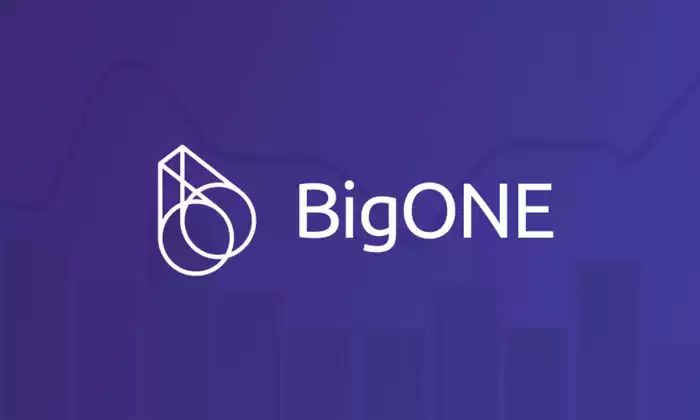-
 Bitcoin
Bitcoin $117600
0.25% -
 Ethereum
Ethereum $4424
0.10% -
 XRP
XRP $3.101
0.50% -
 Tether USDt
Tether USDt $1.001
-0.01% -
 BNB
BNB $836.2
1.26% -
 Solana
Solana $188.8
2.11% -
 USDC
USDC $1.000
0.01% -
 Dogecoin
Dogecoin $0.2301
0.57% -
 TRON
TRON $0.3485
-1.00% -
 Cardano
Cardano $0.9209
-1.34% -
 Hyperliquid
Hyperliquid $46.72
-1.19% -
 Chainlink
Chainlink $22.62
4.84% -
 Stellar
Stellar $0.4275
-0.38% -
 Sui
Sui $3.761
1.91% -
 Bitcoin Cash
Bitcoin Cash $586.7
-0.25% -
 Ethena USDe
Ethena USDe $1.001
0.01% -
 Hedera
Hedera $0.2510
2.06% -
 Avalanche
Avalanche $24.21
2.22% -
 Litecoin
Litecoin $119.7
1.07% -
 Toncoin
Toncoin $3.450
1.06% -
 UNUS SED LEO
UNUS SED LEO $9.411
-0.93% -
 Shiba Inu
Shiba Inu $0.00001298
1.20% -
 Uniswap
Uniswap $10.98
3.25% -
 Polkadot
Polkadot $3.961
2.16% -
 Dai
Dai $1.000
0.00% -
 Bitget Token
Bitget Token $4.642
0.95% -
 Cronos
Cronos $0.1514
0.57% -
 Ethena
Ethena $0.7290
3.78% -
 Monero
Monero $254.1
7.69% -
 Pepe
Pepe $0.00001102
2.47%
BigONE contract operation process
BigONE's contract operation process includes placing orders, matching orders, executing trades, settling trades, facilitating margin and futures trading, and implementing risk management measures to safeguard traders and the exchange.
Nov 30, 2024 at 03:18 am

BigONE Contract Operation Process
BigONE is a cryptocurrency exchange that offers a variety of trading products, including spot trading, margin trading, and futures trading. The exchange's contract operation process is designed to ensure that all trades are executed fairly and efficiently.
Step 1: Placing an Order
To place an order on BigONE, traders must first select the contract they wish to trade. Once the contract has been selected, traders must specify the order type, quantity, and price.
There are two main types of orders: market orders and limit orders. Market orders are executed immediately at the best available price, while limit orders are only executed if the price reaches a specified level.
Step 2: Order Matching
Once an order has been placed, it is added to the order book. The order book is a list of all buy and sell orders for a particular contract.
When a new order is added to the order book, it is matched against the existing orders. If there is a match, the two orders are executed and the trade is complete.
Step 3: Trade Execution
When a trade is executed, the exchange transfers the agreed-upon amount of cryptocurrency from the buyer's account to the seller's account. The exchange also charges a small fee for each trade, which is paid by the buyer.
Step 4: Settlement
After a trade has been executed, it is settled. Settlement occurs when the exchange transfers the underlying asset from the seller's account to the buyer's account.
Step 5: Margin Trading
Margin trading is a type of trading that allows traders to borrow funds from the exchange to increase their trading power. When traders use margin trading, they can trade with more leverage, which can amplify both their profits and losses.
Step 6: Futures Trading
Futures trading is a type of trading that allows traders to bet on the future price of a cryptocurrency. When traders trade futures, they agree to buy or sell a specific amount of cryptocurrency at a specific price on a future date.
Risk Management
BigONE's contract operation process is designed to minimize risk for both traders and the exchange. The exchange uses a number of risk management tools, including:
- Position limits: Position limits are designed to limit the amount of leverage that traders can use. This helps to reduce the risk of large losses in the event of a market downturn.
- Risk engine: The risk engine is a software program that monitors traders' positions and identifies potential risks. If the risk engine identifies a potential risk, it can take action to protect the exchange and its traders.
- Insurance fund: The insurance fund is a pool of money that is used to compensate traders for losses in the event of a major market disruption.
Conclusion
BigONE's contract operation process is designed to ensure that all trades are executed fairly and efficiently. The process is transparent and designed to minimize risk for both traders and the exchange.
Disclaimer:info@kdj.com
The information provided is not trading advice. kdj.com does not assume any responsibility for any investments made based on the information provided in this article. Cryptocurrencies are highly volatile and it is highly recommended that you invest with caution after thorough research!
If you believe that the content used on this website infringes your copyright, please contact us immediately (info@kdj.com) and we will delete it promptly.
- Kazakhstan's Crypto Leap: Bitcoin ETF and Central Asia's Digital Finance Future
- 2025-08-13 12:45:19
- BlockDAG Presale Blazes Past $371M: Fundraising Frenzy Fuels Crypto Sensation
- 2025-08-13 13:05:21
- Meme Coins: Chasing the 2025 Surge – Which Will Moonshot?
- 2025-08-13 10:25:23
- Bitcoin's Wild Ride: Rally, Pullback, and What's Next
- 2025-08-13 10:25:23
- Bitcoin, Bitmax, and Institutional Demand: A New Era of Crypto Investment
- 2025-08-13 10:45:12
- Solana, ROAM, and Airdrops: What's the Buzz in 2025?
- 2025-08-13 11:35:13
Related knowledge

Is it possible to adjust the leverage on an open position on KuCoin?
Aug 09,2025 at 08:21pm
Understanding Leverage in KuCoin Futures TradingLeverage in KuCoin Futures allows traders to amplify their exposure to price movements by borrowing fu...

What cryptocurrencies are supported as collateral on KuCoin Futures?
Aug 11,2025 at 04:21am
Overview of KuCoin Futures and Collateral MechanismKuCoin Futures is a derivatives trading platform that allows users to trade perpetual and delivery ...

What is the difference between realized and unrealized PNL on KuCoin?
Aug 09,2025 at 01:49am
Understanding Realized and Unrealized PNL on KuCoinWhen trading on KuCoin, especially in futures and perpetual contracts, understanding the distinctio...

What different order types are available to use on KuCoin Futures?
Aug 13,2025 at 11:35am
Understanding Order Types on KuCoin FuturesKuCoin Futures offers a comprehensive range of order types to accommodate different trading strategies and ...

How does KuCoin Futures compare against Binance Futures in terms of features?
Aug 09,2025 at 03:22am
Trading Interface and User ExperienceThe trading interface is a critical component when comparing KuCoin Futures and Binance Futures, as it directly i...

How can I manage risk when applying high leverage on KuCoin?
Aug 13,2025 at 11:35am
Understanding High Leverage and Its Implications on KuCoinHigh leverage in cryptocurrency trading allows users to control larger positions with a rela...

Is it possible to adjust the leverage on an open position on KuCoin?
Aug 09,2025 at 08:21pm
Understanding Leverage in KuCoin Futures TradingLeverage in KuCoin Futures allows traders to amplify their exposure to price movements by borrowing fu...

What cryptocurrencies are supported as collateral on KuCoin Futures?
Aug 11,2025 at 04:21am
Overview of KuCoin Futures and Collateral MechanismKuCoin Futures is a derivatives trading platform that allows users to trade perpetual and delivery ...

What is the difference between realized and unrealized PNL on KuCoin?
Aug 09,2025 at 01:49am
Understanding Realized and Unrealized PNL on KuCoinWhen trading on KuCoin, especially in futures and perpetual contracts, understanding the distinctio...

What different order types are available to use on KuCoin Futures?
Aug 13,2025 at 11:35am
Understanding Order Types on KuCoin FuturesKuCoin Futures offers a comprehensive range of order types to accommodate different trading strategies and ...

How does KuCoin Futures compare against Binance Futures in terms of features?
Aug 09,2025 at 03:22am
Trading Interface and User ExperienceThe trading interface is a critical component when comparing KuCoin Futures and Binance Futures, as it directly i...

How can I manage risk when applying high leverage on KuCoin?
Aug 13,2025 at 11:35am
Understanding High Leverage and Its Implications on KuCoinHigh leverage in cryptocurrency trading allows users to control larger positions with a rela...
See all articles

























































































